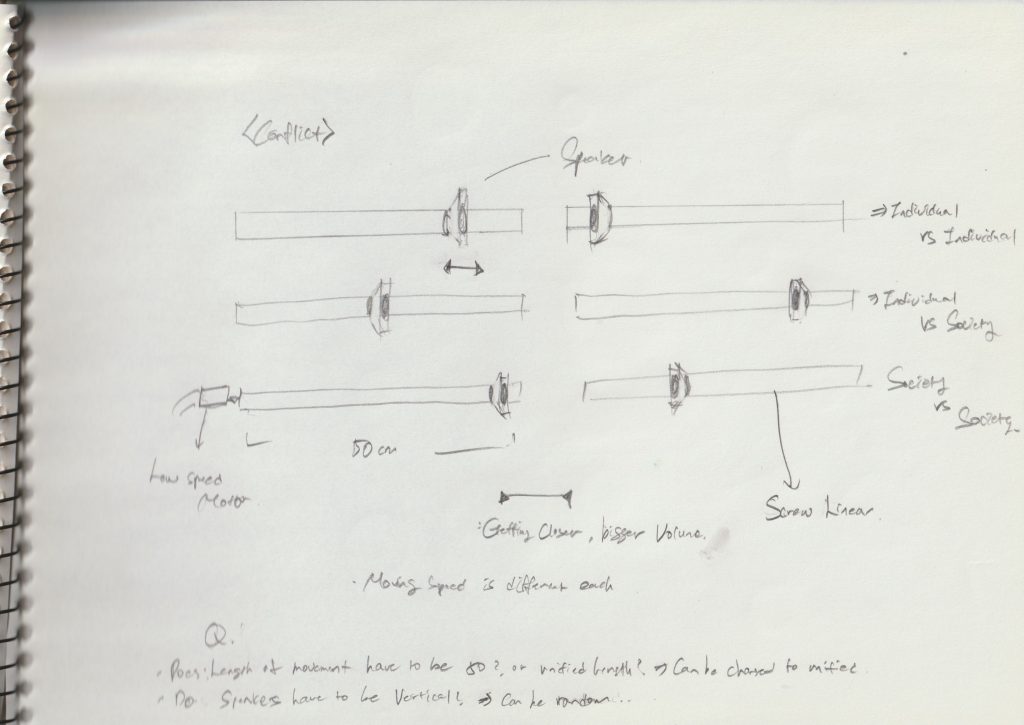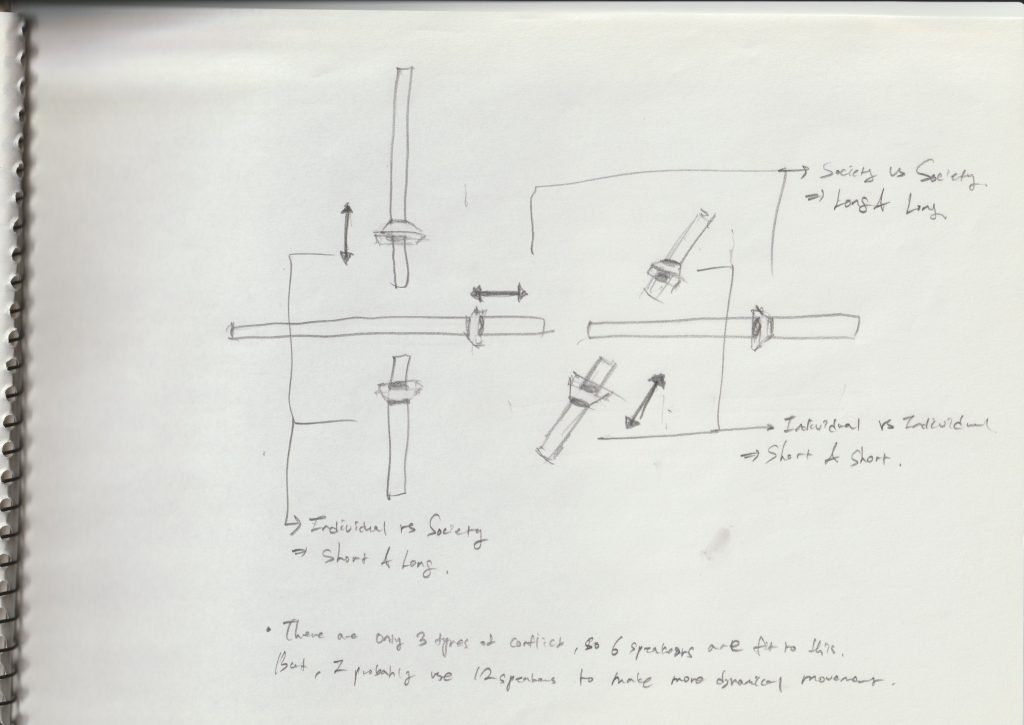In the previous post, I outlined the initial design of my idea, dividing the plan into technological and conceptual development directions. In this current post, I will focus on refining the conceptual aspects of the idea.

My original plan involved arranging six speakers in three parallel rows, with two speakers facing each other in each pair. Each pair would emit sounds representing conflicts occurring between individuals, between an individual and society, and between societies. The mechanism was designed such that the volume would increase as the speakers moved closer and decrease as they moved farther apart. While envisioning this setup, I found it to be minimalist and intuitive, yet I also felt it might appear somewhat uninteresting.

The first direction for development is geometrical composition. The original design consisted of three parallel rows. However, I believe that arranging them intersectingly could create a geometrically beautiful and appealing composition. Nevertheless, since speakers must always form pairs facing each other, creating a geometrical composition with a total of six speakers (i.e., three pairs of speaker rows) would be no different from arranging three lines. I found it challenging to create a complex and aesthetically pleasing composition with only three lines.
Therefore, I decided to increase the number of speakers. Since two speakers must form a pair and I have classified three types of conflict, the number of speakers should be a multiple of six. However, using more than 18 speakers would lead to financial issues and practical technical problems during installation (such as the number of sockets or power supply). Thus, I believe 12 speakers would be the most appropriate number.
At this point, it occurred to me that if all speaker rails were of the same length, say 50cm, it would be challenging to achieve a diverse and stable composition. This led me to consider varying the rail lengths. Rails shorter than 30cm seemed too brief and aesthetically unpleasing, so I plan to use rail lengths between 30cm and 50cm. I will determine the precise lengths after conducting technical experiments to see how they appear in reality and by sketching out various rail configurations.
If the rail lengths are not uniform, it will affect the duration and frequency of the speakers’ back-and-forth movement. Specifically, speakers on shorter rails will experience volume increases and decreases more frequently and rapidly. Abstractly, this makes me contemplate the frequency with which voices are raised in conflict (similar to protests). This could, then, represent the power dynamics of the conflicting parties. In a conflict, the weaker, opposing group, though less powerful, may rebel more often and amplify their voices. Conversely, the stronger, opposing group, while powerful, might quietly observe the situation and occasionally assert their position. In other words, this can be conceptualized as the frequency determined by the rail length.
When classifying groups as individual versus society, individuals typically possess less power than society. And individuals often resist and rebel against society. Regarding conflicts between individuals and individuals, or between societies, while power imbalances generally exist in reality, dramatic differences are not always significant. Therefore, assuming two rail lengths (short and long), individuals could be represented by short rails, and society by long rails. I plan to use this as a basis for conceptualizing the rail arrangement, and the correlation between power and length will require deeper thought after further deliberation.
For now, I will conclude the conceptual development here. In the future, during the process of conducting several experiments and developing more refined ideas, I will need to address a wider range of thoughts and developmental directions.